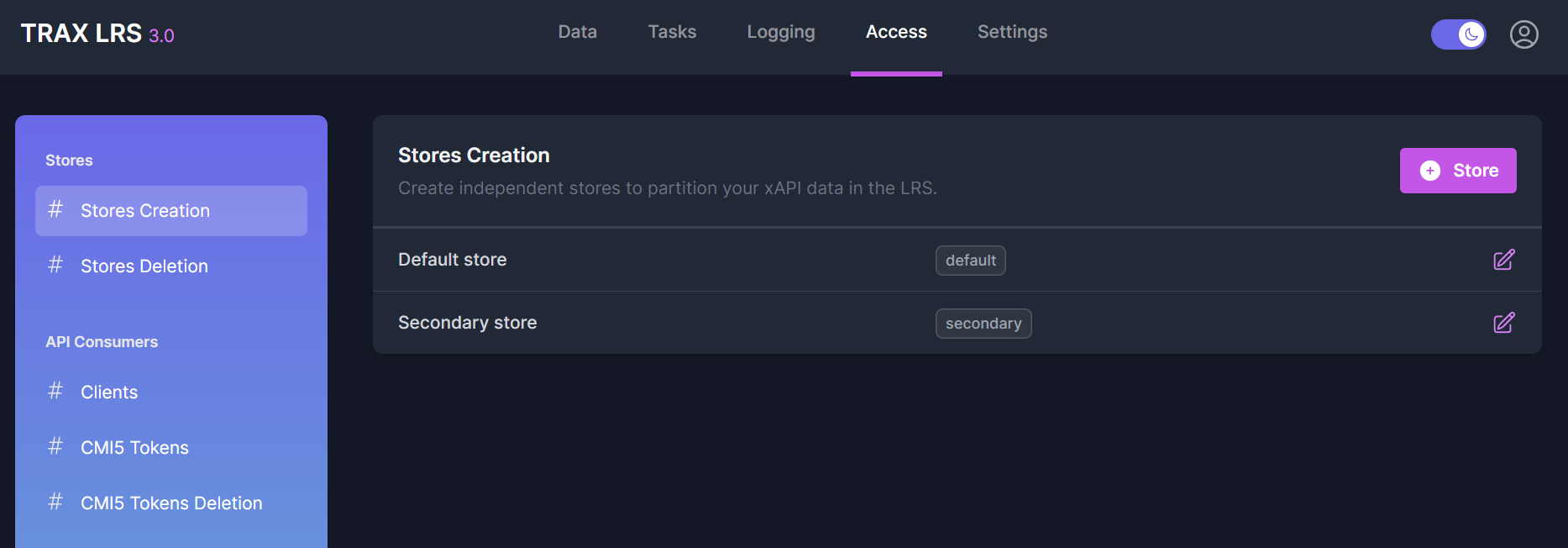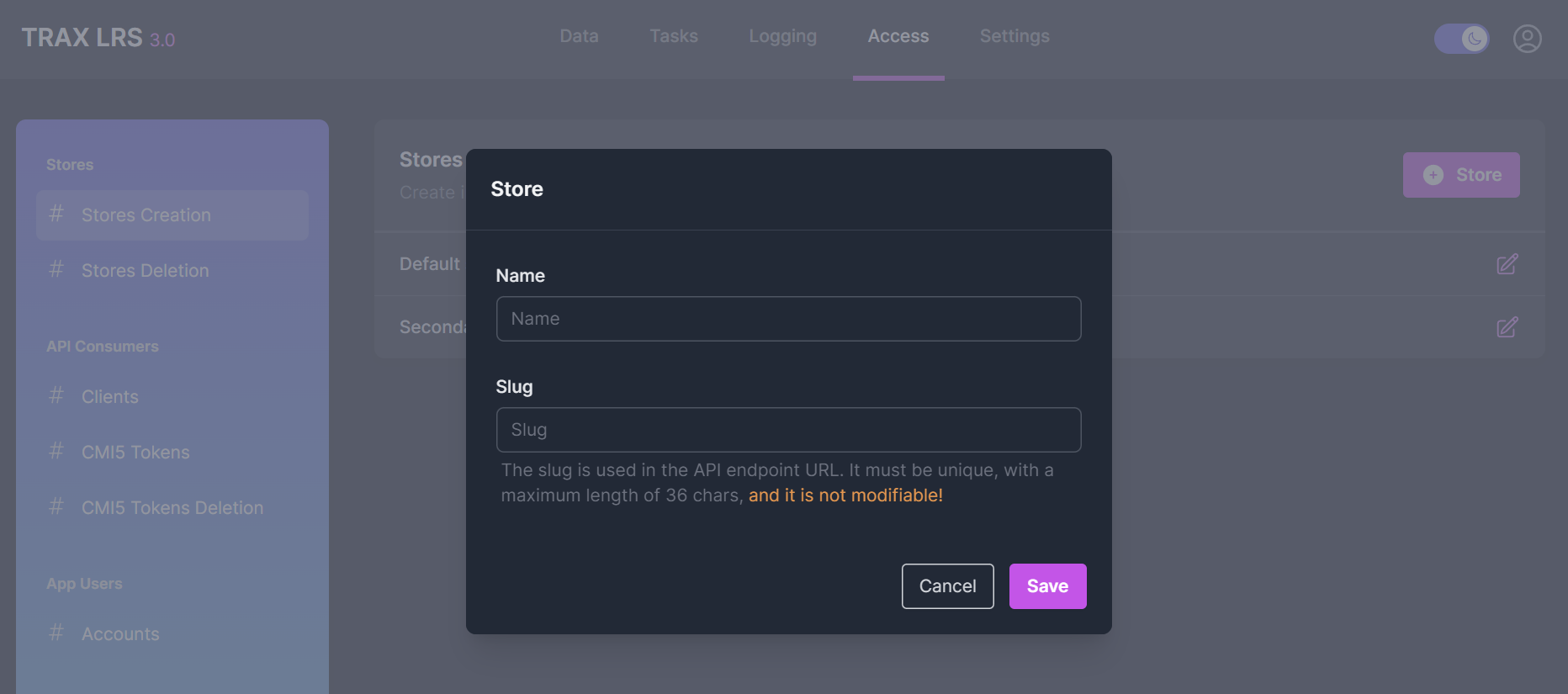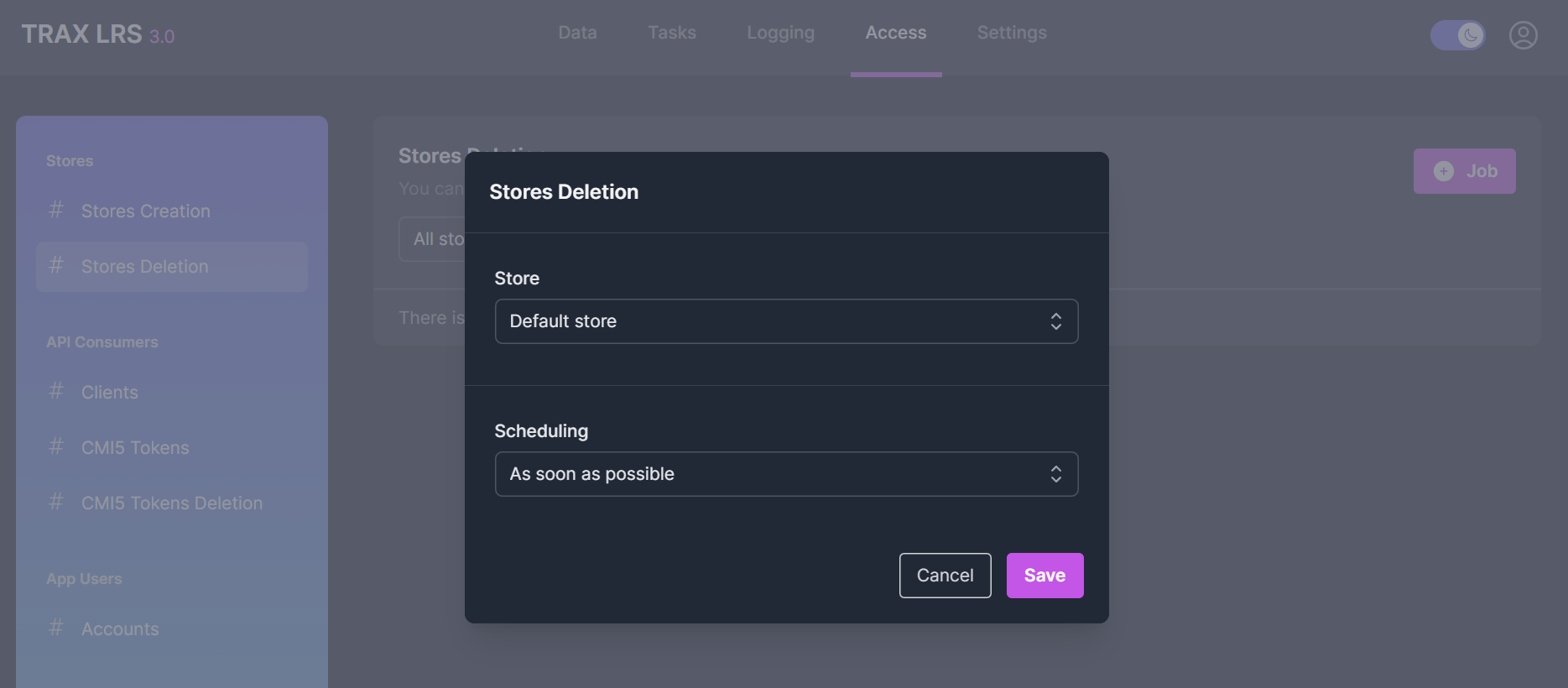Structuring the LRS
Introduction
Before starting to use TRAX LRS, you should think about all the data that will be stored in your LRS, and what will be the best way to organize and manage this data. TRAX LRS 3.0 relies on 3 main concepts that you can use to structure your LRS.
-
Stores: the xAPI data of your LRS can be partitioned into multiple stores. Each store is an independent set of xAPI data, which can be explored and managed independently. For example, you may have a testing store and a production store. Or you may have a store for each department of your company.
-
Clients: a client is an entry point for the LRS, with its own endpoint, credentials and permissions. A client always belongs to a store, so you need to define at the minimum 1 client per store. You may define several clients per store, especially if you have several sources of data for each store. Please, check the managing clients page to go further.
-
Users: user accounts can be defined globally, for the entire LRS. Depending of the role and settings assigned to these accounts, users will have access to all the stores, or to specific stores. Please, check the managing users page to go further.
{warning} The store concept has not been designed to implement a multi-tenancy architecture. Indeed, stores are not completly independent as user accounts are shared between stores, and some users have access to all the stores. Think about installing several instances of TRAX LRS if you need really independent overall data.
Managing stores
You can create and modify stores from the Access > Stores Creation page.

For each store, you have to define:
- A
name - A
slugwhich is like a unique short name used in URLs (not modifiable)

Deleting stores
Stores can't be deleted directly from the Access > Stores Creation page.
The reason is that deleting a store is a complex and long running task,
dealing with potentially large volumes of data.
In order to delete a store, you have to go to the Access > Stores Deletion page, where you can create and manage store deletion jobs.
